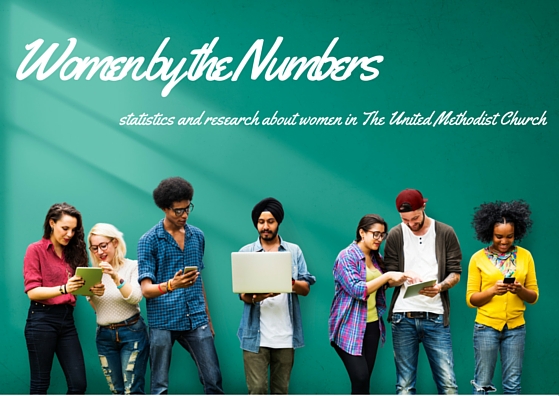In their most recent study, The State of Pastors, the Barna Group noted that the nomination of Hillary Clinton as the first woman to receive her party’s nomination for president of the United States was symbolic of the immense social shift made in the status of women in the U.S. over the past 50 years. A similar shift has been seen in women in ministerial roles in the United States, who have also slowly but steadily increased in their status and numbers in the Church, particularly the mainline church.
by Rev. Leigh Goodrich

In their most recent study, The State of Pastors, the Barna Group noted that the nomination of Hillary Clinton as the first woman to receive her party’s nomination for president of the United States was symbolic of the immense social shift made in the status of women in the U.S. over the past 50 years. A similar shift has been seen in women in ministerial roles in the United States, who have also slowly but steadily increased in their status and numbers in the Church, particularly the mainline church.
Barna reports that one in eleven Protestant senior pastors is a woman, which is triple the percentage of twenty-five years ago. Most of them serve in mainline denominations, with virtually all mainline denominations (99%) ordaining women. However, it is sobering to consider that only 35% of non-mainline denominations permit women to hold senior or executive pastor roles. In comparison, The United Methodist Church reported 10.6% of clergy were female 23 years ago (The Flyer, Winter/Spring, 1992) compared with 27% in 2015, approximating the growth seen by Barna.
The Barna Grop also reports that women experience the role of pastor differently than their male counterparts. Often, females pastor smaller churches than their male colleagues, with median attendance hovering over 75 people at a weekend service, compared with 110 at churches led by men. Perhaps for this reason, clergywomen tend to earn less than clergymen. Women also tend to work alone (38%) or with one additional paid staff person (36%). In comparison, nearly half (48%) of men who serve in the senior pastor role have a staff of three or more, and these staffs include women.
Perhaps the most intriguing part of Barna’s findings is their resonance with our last Women by the Numbers report, “The United Methodist Clergy Career Pipeline Study.” Both studies report that female clergy are less optimistic than their male counterparts regarding their career trajectories. In the Barna study, this was indicated primarily by work-life balance. While Barna reported that 42% of men report being better off than other US pastors regarding work-life balance, only 24% of women felt the same way. In our “Clergy Career Pipeline Study,” we found that men perceived their second and third appointments as “promotions” significantly more than women. Furthermore, almost one in five women (18.9%) reported some level of dissatisfaction with their work, while that is true of only one in ten men (9.3%).
Not surprisingly, the progress of women in The United Methodist Church in some ways mirrors the progress of women in Protestant denominations throughout the United States. As we continue to track the progress of women in The United Methodist Church, just as we observe the findings of research by Barna and other research groups, we find that our progress is similar to Protestantism as a whole, slow and steady. While we may not have achieved the goal of fully empowering women at all levels of the Church, we are making progress, just as other Protestant denominations and our society move toward greater equity and empowerment for women.
